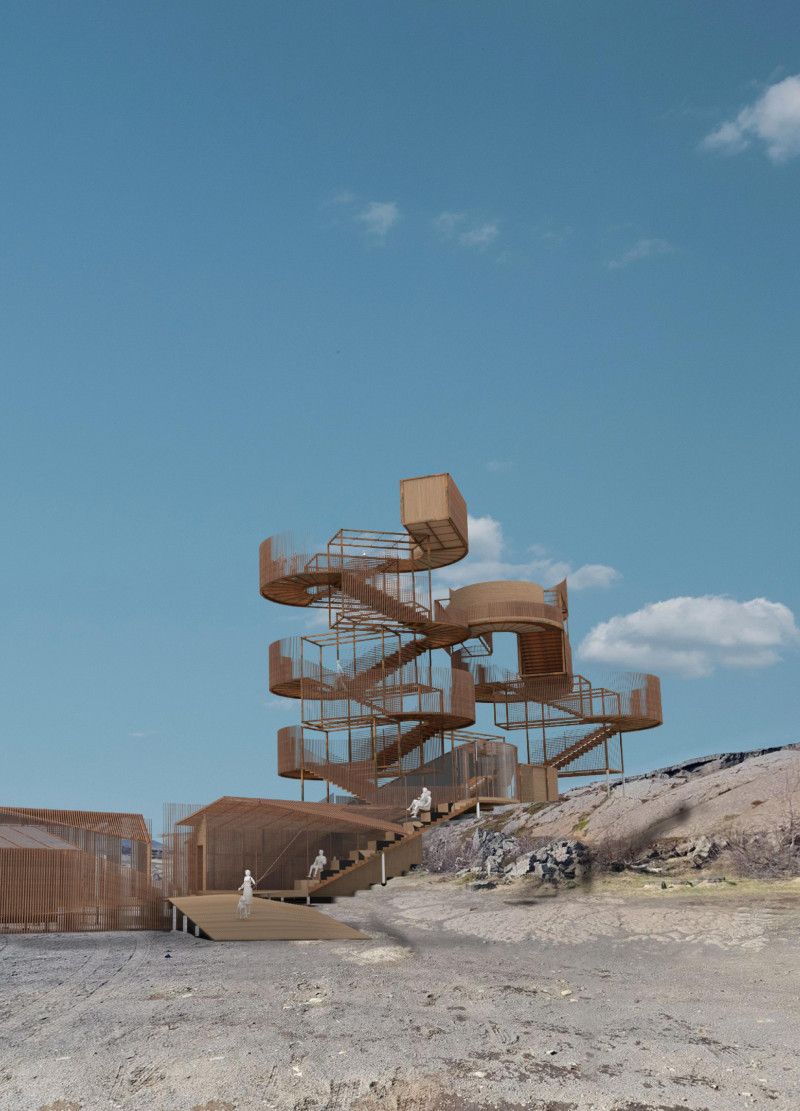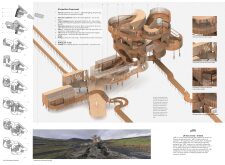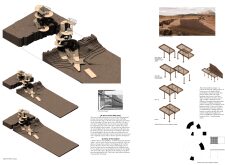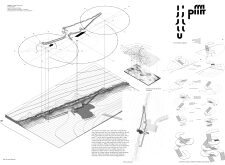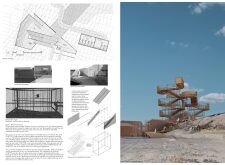5 key facts about this project
The design features two towers that represent the geological divide between Europe and America. Located in Iceland, the structures integrate functional spaces aimed at enhancing visitor engagement with the area’s geological significance. The concept, articulated through the term “pffft,” reflects the dynamic action of tectonic plates, providing a foundation for both the physical design and user experience.
Observation Platforms
Each tower includes indoor observation platforms that offer wide views of the surrounding landscape. This allows visitors to connect closely with the geological features, emphasizing the visual relationship to the tectonic separation. The design of these platforms invites exploration and curiosity about the land and its history.
Visitor Facilities
A visitor waiting area features a glass façade that encourages interaction with the environment. A large staircase with built-in seating leads to an interior space overlooking the rift, promoting a connection to the landscape. An information stand in this area supports educational displays, helping visitors learn more about the geological context and significance of the site.
Café and Service Areas
The café serves beverages and light snacks, designed to be part of the stepped seating along the ridge. This area fosters social interaction among visitors while meeting hospitality needs. Essential services, including toilets and storage, are efficiently integrated into the overall layout to ensure functionality and accessibility.
Materiality and Structural Considerations
Materials used in the construction include COR-TEN steel and wood. The steel is valued for its durability and ability to withstand the local climate, contributing to the overall stability of the towers. Wood is chosen for its warm appearance, helping to connect the buildings visually with the surrounding nature. This consideration allows the structures to fit into the landscape while maintaining a clear architectural presence.
Pathways around the towers are elevated to protect the fragile ground below. Visitors can walk through the site while enjoying views of the landscape and its geological formations. This design approach encourages reflection and engagement with the unique characteristics of the area, making each visit a personal experience tied to the land itself.


